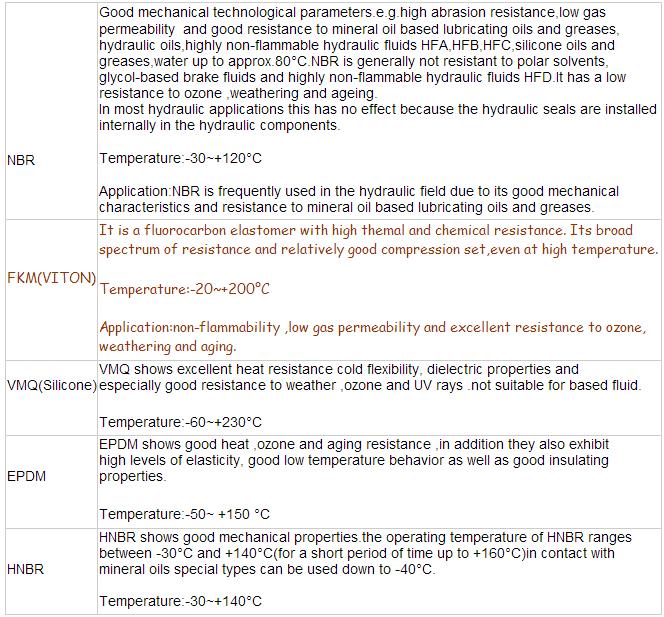 |
Nitrile, chemically, is a copolymer of butadiene and acrylonitrile. Acrylonitrile content varies in commercial products from 18% to 50%. As the nitrile content increases, resistance to petroleum base oils and hydrocarbon fuels increases, but low temperature flexibility decreases.
About Nitrile / NBR:
Due to its excellent resistance to petroleum products, and its ability to be compounded for service over a temperature range of -35°C to +120°C (-30°F to +250°F), Nitrile /NBR is the most widely used elastomer in the seal industry today. Also many military rubber specifications for fuel and oil resistant O-rings require nitrile based compounds. It should be mentioned that to obtain good resistance to low temperature, it is often necessary to sacrifice some high temperature resistance. Nitrile compounds are superior to most elastomers with regard to compression set, tear, and abrasion resistance. Nitrile compounds do not possess good resistance to ozone, sunlight, or weather. They should not be stored near electric motors or other ozone generating equipment.
Nitrile / NBR usage:
They should be kept from direct sunlight. However, this can be improved through compounding. NBR is the standard material for hydraulics and pneumatics. NBR resists oil-based hydraulic fluids, fats, animal and vegetable oils, flame retardant liquids (HFA, HFB, HFC), grease, water, and air. Special low-temperature compounds are available for mineral oil-based fluids. By hydrogenation, carboxylic acid addition, or PVC blending, the nitrile polymer can meet a more specified range of physical or chemical requirements.
The quality of Nitrile-compounds depends on the percentage of acrylonitrile in the base polymer. The following table indicates the change of properties as a function of acrylonitrile content.

 |
 |
Add:Room 1-2,Building 6,No.18 Baosheng road,Industrial zone,Songjiang,Shanghai
Tel:086-021-67826770 57749771 57749775
Fax:086-021-67824719
E-mail:zhy@zk-seal.com









